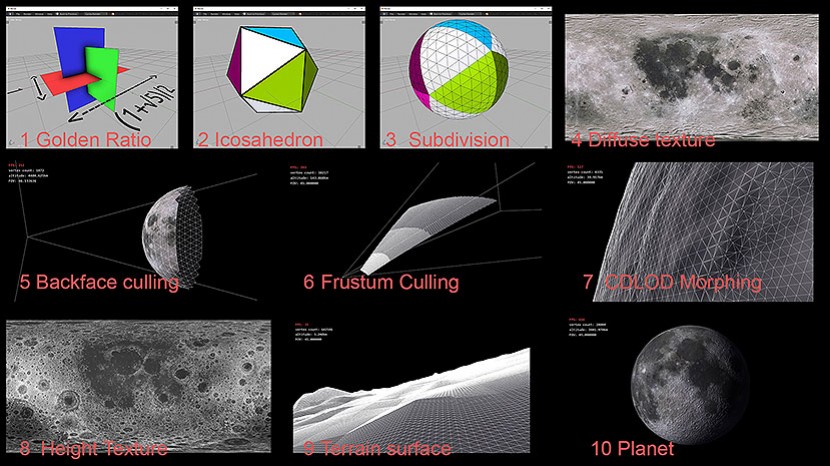RELATED TOPICS

In the last few years a considerable amount of games where announced or released that have mechanics involving the player moving from the surface of a planet to space without a loading screen, without a noticeable change in framerate. For his graduation work Game Development student Robert Lindner researched some of the techniques involved, like rendering the scene at various levels of detail (LOD) depending on the distance of the camera.
After evaluating various techniques, Robert used the Continuous Distance-Dependent Level of Detail for his planet rendering project, since it utilizes the GPU quite well, is quite easily modified to use procedural data and tessellation and has a memory friendly way of merging different LOD levels with a transition. Other algorithms fall short because they are either limited to static terrain or highly CPU and memory intensive.
Different culling techniques where applied because only a part of the planet is displayed on the screen, the part you don't seen doesn't have to be calculated and can be omitted, but needs to be shown again when zoomed out.
When the planet is viewed up close the terrain needs to be deformed, this is done in realtime by means of a height texture.
To learn more about this graduation work you can read Roberts paper or if you are interested in the code, check out Roberts Github page.


